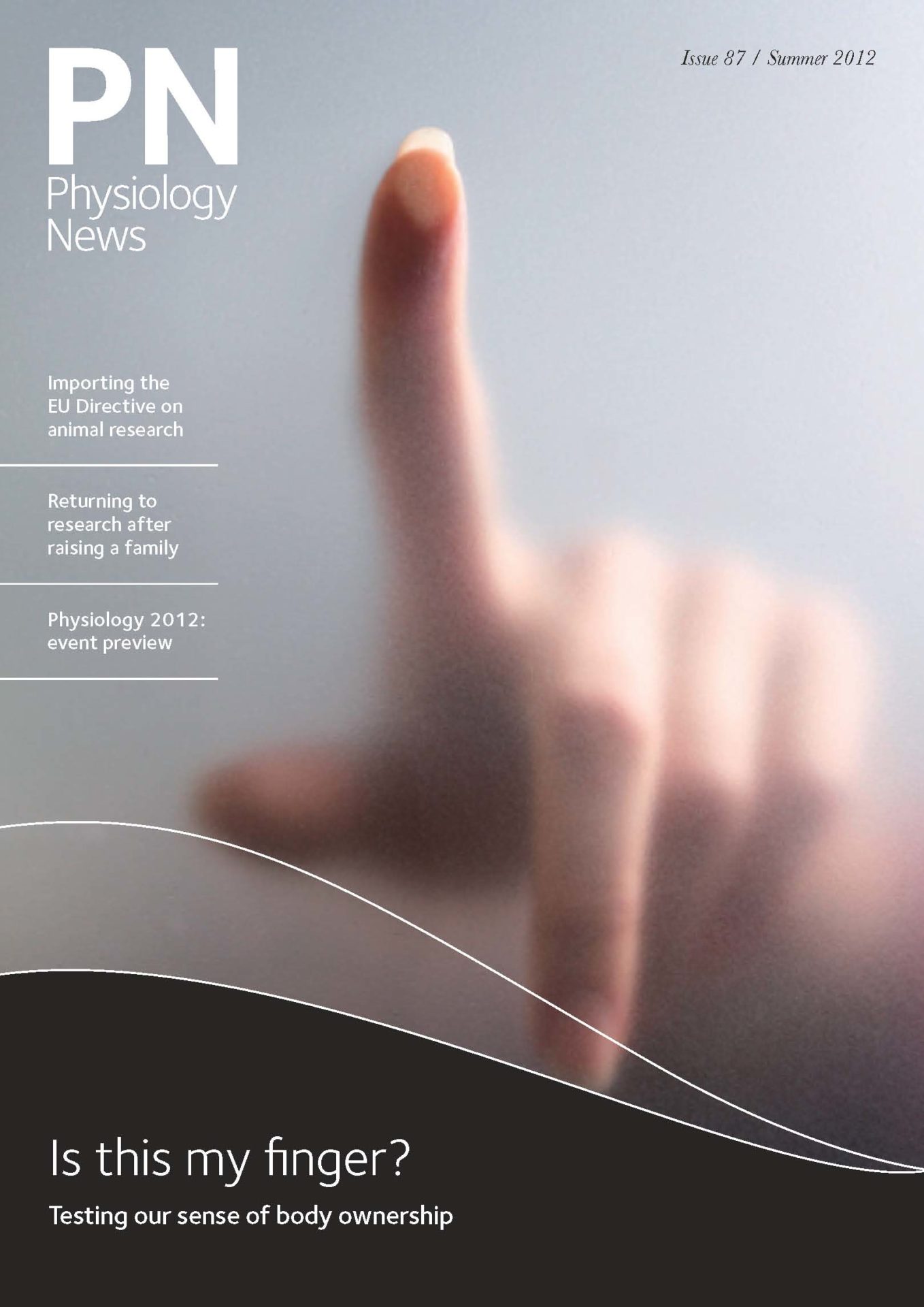
Physiology News Magazine
Lab profile: The Reproductive & Vascular Biology Group, Newcastle University
Membership
Lab profile: The Reproductive & Vascular Biology Group, Newcastle University
Membership
Ana Dordea, PhD student, describes the work of the The Reproductive and Vascular Biology Group (RVBG), part of the Institute of Cellular Medicine within the Faculty of Medical Sciences.
https://doi.org/10.36866/pn.87.43

For the past three and half years, I have had the pleasure of working under the supervision of two leading academics, Michael Taggart and Stephen Robson. I was their first jointly supervised student, joining two researchers, Michèle Sweeney and Julie Martin. Within a year, two post-docs joined, Aiqing Chen and Winnie Tong. My third year saw the arrival of Christopher Nicholson – a second PhD student – closely followed by Leo Gurney, a clinical research associate on a 12-month placement. The team works in close collaboration with Nick Europe-Finner and his senior researcher, Magda Karolczak-Bayatti.
Our lab is adjacent to the Royal Victoria Infirmary Hospital. A well-established collaboration with research midwives and consultants there allows for plentiful access to human placentas and uterine (pregnant and non-pregnant) biopsies.
From these, our group prepares an array of material, from microdissected tissue explants to single cells and protein, or RNA isolates. My research concerns the functioning of smooth muscle within small arteries of the uteroplacental organs and, in particular, the mechanisms, and possible differences, in relaxatory signalling mechanisms of human myometrial and placental arteries. For this, blood vessels of <400 μm diameter are micro-dissected under the microscope and then meticulously cleaned, before mounting on small-wire (40 μm diameter) myograph chambers.
Thereafter, I assess the contractility and endothelial-dependent relaxation of the arteries before performing particular interventions to assess the actions of protein kinase G (PKG) mimetics. From the time of obtaining the biopsy, my experiment can last 10 hours.
The signalling mechanisms or sensitivities regulating placental and myometrial vascular tone may differ, as these circulations remodel or develop in gestation with particular organ specificities. As current therapies for complications of pregnancy often affect both mother and baby, such studies help identify new pregnancy-related pathophysiologies. A principle finding of my work is that differences in endothelial-mediated relaxation of intact human myometrial and placental arteries are actually reflected in alterations of PKG signalling at the level of smooth muscle cell myofilaments of each artery type.
Other research conducted in the lab includes using primary immunoprecipitation and Western blotting techniques to assess protein targets of the acetylation signalling mechanisms in vascular and non-vascular smooth muscle tissues from human, rat and guinea pig. Acetylation is increasingly recognised as a significant post-translational modification, and Magda has recently published on the likelihood of it regulating myometrial protein activity during pregnancy, whilst Aiqing is presently exploring the possibility of a similar role in arteries. Julie is developing an expression profile of proteins in the myriad tissues used in our experiments.
As an MRC Training Fellow in Bioinformatics, Winnie has developed a biophysically detailed computational model of uterine smooth muscle ion channels and is currently trying to apply new imaging techniques to follow electrical and contractile patterns in myometrium of pregnant guinea pigs.
Meanwhile, Chris has been looking at the effects of ageing and oestrogen receptor activation on vascular function of small arteries from the myometria of pre- and post-menopausal women and comparing these to young and old mice. It is thought that age affects structure and function of vasculature, and that these changes may contribute greatly to the risk of cardiovascular disease. There is controversy as to the nature and/or extent of gender influences on this risk, and developing a greater understanding of how the vascular actions of oestrogens are affected by age may allow for the development of different cardio-protective treatment options.
Finally, Leo, in conjunction with Michèle, and Arwyn Jones at the School of Pharmacy in Cardiff University, is currently using live-cell fluorescent tracking and biochemical assays to generate preliminary data on the use of cell-penetrating peptides as vectors for potential drug delivery in human smooth muscle tissues.
Whilst my scientific endeavours have not always yielded positive results, I will be sad to leave the lab at the end of my PhD. I have enjoyed every moment and I am thankful not only for the demanding scientific knowledge acquired during the last three and a half years, but also for the confidence it has given me to face the outside world.
